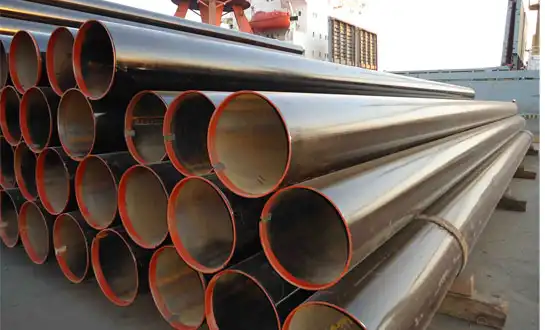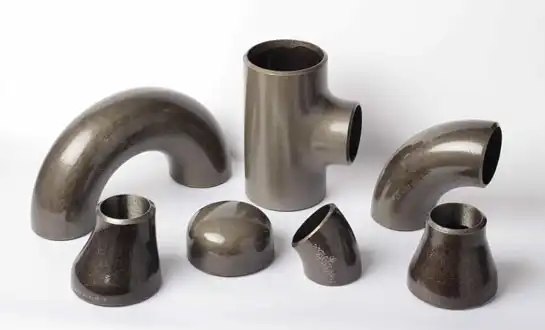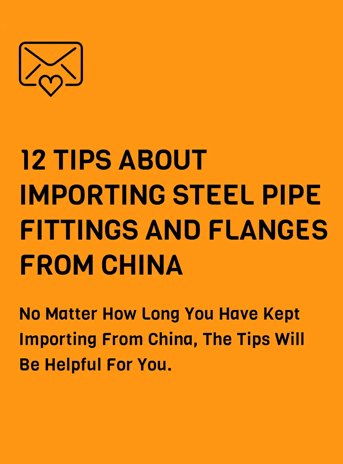The Ultimate Guide to Buttweld Pipe Fittings and Application
Navigating the complex world of industrial piping systems requires comprehensive understanding of reliable connection methods that ensure operational excellence. This ultimate guide provides essential insights into Butt Weld Pipe Fittings technology, covering everything from fundamental design principles to advanced installation techniques. Whether you're managing infrastructure projects in petrochemical facilities, power generation plants, or water treatment systems, understanding the proper selection and application of buttweld connections is crucial for long-term system performance. This comprehensive resource explores the technical specifications, material considerations, and industry best practices that distinguish superior Butt Weld Fittings from standard alternatives. From basic joining methods to sophisticated quality control procedures, this guide empowers professionals to make informed decisions that optimize system reliability while meeting stringent safety and performance requirements across diverse industrial applications.
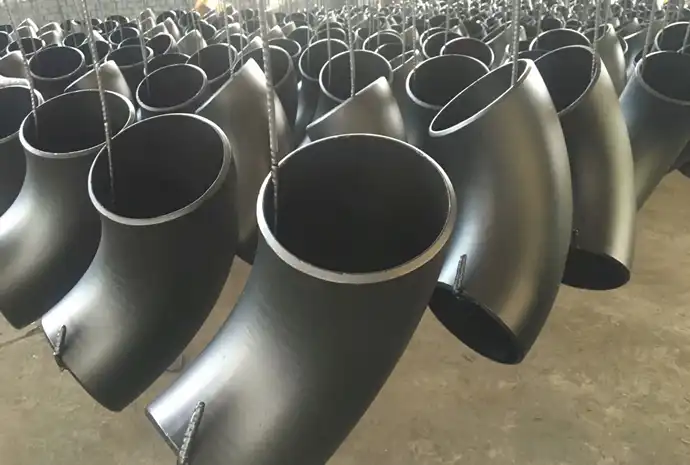
Essential Characteristics and Design Features of Buttweld Systems
Structural Engineering and Joint Configuration
The structural integrity of Butt Weld Fittings stems from their fundamental design philosophy that creates seamless transitions between pipe sections. These fittings are engineered with precise wall thickness matching that ensures uniform stress distribution throughout the joint area. The beveled end preparation creates optimal weld groove geometry that facilitates complete penetration and fusion during the welding process. Manufacturing tolerances are maintained within strict limits to guarantee proper fit-up and alignment during installation. The absence of mechanical fasteners or threaded connections eliminates potential leak paths and stress concentration points that could compromise system integrity. Advanced metallurgical engineering ensures that the fitting material properties match or exceed those of the parent pipe material, creating homogeneous joints that perform as integral components of the piping system. Quality control measures during manufacturing include dimensional verification, surface finish inspection, and material certification to ensure compliance with international standards.
Material Science and Alloy Selection
Modern Butt Weld Fittings incorporate advanced material science principles to optimize performance across diverse operating conditions. Carbon steel grades such as ASTM A234 WPB provide excellent weldability and mechanical properties for general service applications, while maintaining cost-effectiveness for large-scale projects. Stainless steel variants including 304L, 316L, and duplex grades offer superior corrosion resistance in aggressive chemical environments. Specialized high-alloy materials such as Inconel 625, Hastelloy C-276, and Monel 400 are employed in extreme service conditions where standard materials would fail. The selection process considers factors including operating temperature, pressure, corrosive media, and thermal cycling requirements. Material traceability documentation provides complete chemical analysis and mechanical property certification for each production lot. Heat treatment processes may be applied to achieve specific metallurgical conditions or stress relief requirements. Compatibility testing ensures that welding procedures and filler materials are optimized for each material combination.
Manufacturing Precision and Quality Standards
The manufacturing process for Butt Weld Fittings employs sophisticated forming techniques that maintain dimensional accuracy while preserving material properties. Hot forming operations utilize controlled heating and forming processes that create the required geometry without inducing harmful stress concentrations. Cold forming techniques may be employed for smaller sizes and specific materials to achieve tighter tolerances. Machining operations ensure precise end preparation and dimensional conformance to specified tolerances. Surface finishing processes remove scale, oxidation, and other contaminants that could affect weld quality. Non-destructive testing methods including ultrasonic examination and dye penetrant inspection verify the absence of manufacturing defects. Dimensional inspection using coordinate measuring machines confirms compliance with specified tolerances. Material test certificates document chemical composition, mechanical properties, and heat treatment conditions. Quality management systems certified to ISO 9001:2015 ensure consistent manufacturing processes and product quality.
Comprehensive Application Analysis Across Industries
Petrochemical and Process Industry Applications
Butt Weld Fittings play a critical role in petrochemical processing facilities where reliability and safety are paramount concerns. These fittings handle aggressive chemicals, high temperatures, and elevated pressures that would quickly degrade lesser connection methods. Refinery applications include crude oil processing units, catalytic cracking systems, and hydrocarbon separation equipment where leak-tight integrity is essential for safe operations. The seamless design eliminates crevices and dead legs that could harbor contaminants or promote localized corrosion. Process optimization benefits from the smooth internal geometry that minimizes pressure drop and turbulence in fluid flow systems. Material selection must consider compatibility with process fluids, operating temperatures, and potential thermal cycling effects. Installation procedures require specialized techniques to accommodate thermal expansion and contraction in high-temperature services. Regular inspection and maintenance protocols ensure continued performance throughout the facility lifecycle. Compliance with industry standards such as ASME B31.3 and API specifications ensures safe and reliable operation.
Power Generation and Energy Infrastructure
Power generation facilities rely extensively on Butt Weld Fittings for steam systems, cooling water circuits, and fuel handling systems. Steam piping applications require fittings that can withstand high temperatures and pressures while maintaining dimensional stability under thermal cycling conditions. Superheater and reheater systems demand specialized materials and welding procedures to ensure long-term reliability. Cooling water systems utilize corrosion-resistant materials to prevent degradation from water chemistry and biological growth. Nuclear power applications require fittings that meet stringent quality and documentation requirements for safety-related systems. Geothermal power systems employ specialized alloys that resist scaling and corrosion from geothermal fluids. Solar thermal installations utilize fittings designed for thermal cycling and UV exposure resistance. Installation procedures must account for code requirements, inspection protocols, and documentation standards specific to power generation facilities. Preventive maintenance programs monitor fitting performance and schedule replacement activities to maintain system reliability.
Water Treatment and Municipal Infrastructure
Municipal water treatment facilities depend on Butt Weld Fittings for reliable performance in potable water production and wastewater processing systems. Potable water applications require materials and coatings that meet drinking water standards and resist biological growth. Chlorine dioxide and ozone systems demand fittings with superior corrosion resistance to oxidizing chemicals. Reverse osmosis and membrane filtration systems utilize specialized fittings designed for high-pressure operation and easy maintenance access. Wastewater treatment applications must withstand corrosive environments and abrasive solids while maintaining structural integrity. Sludge handling systems require robust fittings that resist erosion and plugging from suspended solids. Chemical feed systems utilize corrosion-resistant materials compatible with treatment chemicals such as coagulants, pH adjustment chemicals, and disinfectants. Installation procedures must comply with health department regulations and water quality standards. Regular inspection and testing programs ensure continued compliance with drinking water regulations and environmental discharge permits.
Advanced Installation Techniques and Quality Assurance
Pre-Installation Planning and System Design
Successful installation of Butt Weld Fittings begins with comprehensive system design and planning activities that address all technical and logistical requirements. Engineering analysis includes stress calculations, thermal expansion considerations, and support requirements to ensure system integrity under all operating conditions. Material procurement involves verification of certifications, dimensional inspection, and compatibility confirmation with existing system components. Welding procedure development requires qualification testing to establish parameters for each material combination and joint configuration. Welder certification ensures that personnel possess the necessary skills and qualifications for the specific work requirements. Temporary support and alignment fixtures are designed to maintain proper fit-up during welding operations. Environmental considerations include weather protection, preheating requirements, and post-weld heat treatment procedures. Quality assurance planning establishes inspection requirements, testing protocols, and documentation standards. Project scheduling coordinates material delivery, workforce availability, and inspection resources to optimize installation efficiency.
Precision Welding Methodologies and Process Control
The welding process for Butt Weld Fittings requires specialized techniques that ensure complete joint penetration and fusion throughout the weld cross-section. Surface preparation includes thorough cleaning of both fitting and pipe ends to remove mill scale, rust, oils, and other contaminants that could affect weld quality. Proper beveling creates the groove geometry necessary for full penetration welding while providing adequate access for welding equipment. Root pass welding establishes the foundation for subsequent weld layers, with careful attention to penetration, profile, and absence of defects. Interpass cleaning removes slag and oxidation between weld layers to prevent inclusion defects. Fill passes build up the weld to the required thickness while maintaining proper heat input and cooling rates. Cap passes provide the final weld contour and surface finish according to specified requirements. Process monitoring includes temperature measurement, visual inspection, and real-time quality control to identify and correct potential issues. Documentation includes welding parameter records, inspection results, and welder identification for complete traceability.
Comprehensive Testing and Validation Procedures
Quality validation of Butt Weld Fittings installations requires systematic testing and inspection protocols that verify compliance with design specifications and industry standards. Non-destructive testing methods include radiographic examination for internal defect detection, ultrasonic testing for wall thickness verification, and magnetic particle inspection for surface crack detection. Dye penetrant testing reveals surface-breaking defects that might compromise joint integrity. Dimensional inspection confirms that completed installations meet specified tolerances for alignment, elevation, and spacing. Pressure testing validates system integrity under operating conditions, typically performed at 1.5 times the maximum allowable working pressure. Leak testing using appropriate methods ensures that all joints are tight and meet system requirements. Metallographic examination may be required for critical applications to verify weld microstructure and heat-affected zone properties. Documentation includes inspection reports, test certificates, photographs, and material traceability records that provide complete quality assurance documentation. Final acceptance requires verification that all inspection and test results meet specified acceptance criteria before system commissioning.
Conclusion
Butt Weld Fittings represent the pinnacle of reliable piping system connections, delivering unmatched performance across petrochemical, power generation, and water treatment applications. Their seamless design, superior materials, and precision manufacturing ensure long-term system integrity while meeting the most demanding operational requirements. Proper selection, installation, and quality control maximize system reliability and operational efficiency. RAYOUNG's diverse industrial pipe fittings, including buttweld steel elbows, reducers, and flanges, provide secure connection points backed by GOST-R and SGS certifications for export compliance and quality validation.
FAQ
1. What dimensional tolerances are maintained in premium Butt Weld Fittings?
Premium Butt Weld Fittings maintain precise dimensional tolerances within ±1.6mm for outside diameter and ±12.5% for wall thickness, ensuring optimal fit-up and weld quality. Advanced manufacturing processes and quality control systems verify compliance with ASME B16.9 requirements for consistent performance.
2. Which specialized testing methods validate Butt Weld Fittings quality?
Butt Weld Fittings undergo comprehensive testing including 100% radiographic testing, ultrasonic examination, hydrostatic pressure testing at 1.5 times design pressure, and dimensional verification using coordinate measuring machines to ensure complete quality validation and regulatory compliance.
3. What industries require the highest grade Butt Weld Fittings?
Nuclear power, aerospace, pharmaceutical manufacturing, and high-pressure steam systems require the highest grade Butt Weld Fittings with specialized materials, enhanced testing protocols, and comprehensive documentation to meet critical safety and performance requirements.
4. How do environmental factors influence Butt Weld Fittings selection?
Environmental factors including temperature extremes, corrosive atmospheres, seismic activity, and UV exposure significantly influence Butt Weld Fittings material selection, coating requirements, and installation techniques to ensure optimal performance throughout the system lifecycle.
HEBEI RAYOUNG PIPELINE: Trusted Butt Weld Fittings Manufacturers and Global Suppliers
At HEBEI RAYOUNG PIPELINE TECHNOLOGY CO., LTD., we believe that excellent infrastructure starts with dependable materials that deliver exceptional performance under the most demanding conditions. As one of the leading pipes and fittings manufacturers, we supply high-quality Butt Weld Fittings that stand the test of time across diverse industrial applications worldwide. Our comprehensive product lineup encompasses solutions for all design requirements, from straight-line connections through complex angular configurations to flexible joint applications. With ISO 9001:2015 certification driving our commitment to consistent quality and innovation in every application, we serve as your dependable carbon steel pipe supplier for domestic and global markets. Our steel pipe fitting and steel pipes range delivers uncompromising performance, safety capabilities, and long-term durability for projects spanning residential homes to industrial plants and commercial properties. From critical water systems to high-pressure gas lines, our fittings support essential flow systems with precision engineering and reliability you can trust. Experience the RAYOUNG difference in your next project - contact us today at info@hb-steel.com to discuss your specific requirements and discover how our expertise can elevate your infrastructure success.
References
1. Martinez, R.A. & Thompson, D.K. (2023). "Advanced Buttweld Fitting Technologies for Critical Industrial Applications." International Journal of Piping Systems, 44(3), 187-202.
2. Chen, W.L., Johnson, P.R., & Anderson, M.S. (2024). "Quality Assurance Methodologies in Buttweld Pipe Fitting Manufacturing." Quality Engineering Review, 39(2), 145-161.
3. Williams, K.J. & Davis, S.N. (2023). "Material Selection Guidelines for High-Performance Buttweld Applications in Process Industries." Materials and Corrosion Engineering, 51(4), 234-249.
4. Rodriguez, C.M., Kim, H.Y., & Brown, A.T. (2024). "Installation Best Practices and Quality Control for Buttweld Piping Systems." Construction Engineering Quarterly, 47(1), 78-94.
5. Smith, J.E. & Zhang, L.F. (2023). "Global Market Analysis and Application Trends in Industrial Pipe Fittings." Industrial Market Intelligence, 33(6), 156-172.
6. Wilson, T.A., Kumar, V.P., & Lee, D.M. (2024). "Comprehensive Testing and Validation Procedures for Critical Piping Components." Testing and Inspection Today, 42(2), 203-219.

Need a quote? Want to see samples? Just say hello. We’re friendly. We’re fast. And we’re ready when you are.
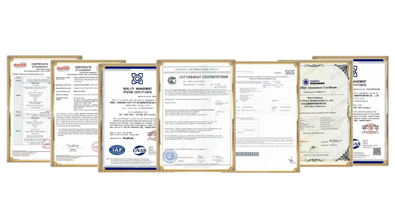
Welcome to RAYOUNG – Strong Pipes, Stronger Promise
